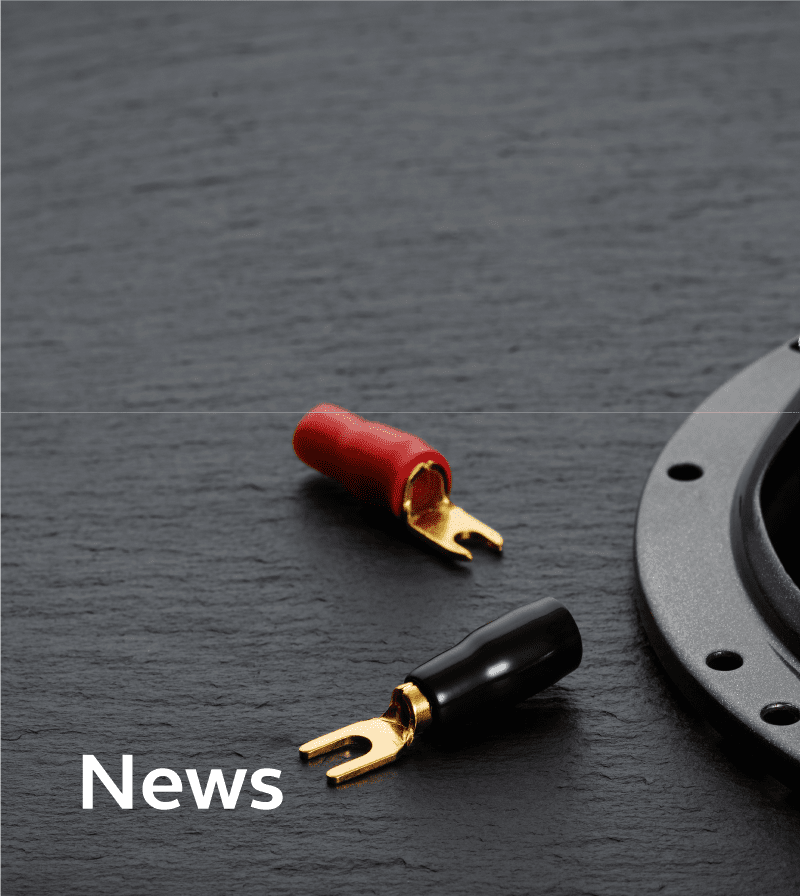How is your car audio system? Chances are you are not satisfied with the sound in your car, and frankly, it’s not even surprising. Indeed, car audio is not among the list of priorities of car manufacturers. As a result, the original equipment manufacturer (OEM) doesn’t deliver the best quality it could. Your vehicle’s initial car stereo system is decent, but it could be much better.
At Jazz Hipster, we help you create the sound of your dream with our simple car audio guide. So if you want to improve your sound, read on to learn more about car audio.

Assess Your Current Car Audio System
A speaker is an electronic device designed to turn electromagnetic waves into sound waves, thereby creating and projecting an audible noise. They are usually used for entertainment purposes, such as listening to music, watching television, or playing video games. The sound is created by running an electric current through an electromagnetic coil, causing it to magnetize and demagnetize rapidly, creating vibrations and subsequently sound. The exact nature of the sound depends on the frequency and amplitude of the sound waves. The frequency determines how high pitched or low pitch a sound will be, while the amplitude denotes the volume.
What To Know About OEM Car Audio Systems
First of all, let’s clarify one crucial point. OEM sound systems are not necessarily poor quality. But from the perspective of a listener and music enthusiast, the experience of listening to your favorite song in the car could differ significantly from listening to it on your home stereo system. So here, we’re focusing on ensuring you can get the same joy from your car audio as your other audio systems.
4 Steps Test Your Car Audio Sound System
Here’s a simple test that requires no effort at all:
#1. Close your car doors and windows when you’re inside.
#2. Pick your favorite tune, and don’t be afraid to turn up the volume. However, we don’t recommend ramping up the volume too high. For your safety, you may want to download a free app that monitors the loudness of sounds around you, such as Decibel X or Sound Meter. You can safely listen to sounds up to 100 decibels for a few minutes if your hearing is healthy.
#3. With the volume up, pay close attention to the quality of the sound.
Does the sound feel distorted at a high volume?
Do you need to adjust the treble for clarity?
Does the ball sound empty or hollow when you try adjusting it?
#4. Consider how you play the song on your car stereo. Are you connecting your smartphone to the head unit?
Do you tune in to the radio? Are you playing from a CD?
Do the options available not meet your needs?
Do you want to be able to do more with the head unit?
The Result
If you answer one or more of these questions with a positive, it’s time to roll up your sleeves and get to work.
What to Consider Before Upgrading Your Car Audio System
Not every music enthusiast has the same expectations from their car audio system. Therefore, you want to determine precisely what you expect from your car audio, depending on your priorities.
Volume
First, the real question is: How often do you listen to loud music? If the answer is almost never, you might be satisfied with the output quality you receive for your typical listening volume. In this case, even if you know that your sound system is not optimal, you could still find that it doesn’t impact your enjoyment.
Budget
Your budget is the second most important point to determine. How much are you willing to invest to improve your car audio quality? Again, depending on your budget, this will help define which route to take for your sound upgrades.
Keep The Factory Setup Or Change It All
When it comes to upgrading the car audio, you also need to decide whether you are comfortable changing the factory stereo or whether you want to upgrade within the pre-fitted system.
Bass
Finally, does bass feature heavily in your music experience? If the bass is an important part of listening to your favorite music, consider additional features for your car audio system.
The components of your car audio system
There is more than one way to upgrade your car audio system, so your first step should be to figure out which way is right for you. It is worth noting that any replaced component will considerably improve your sound. In other words, you may only need to change part of the system.
Your car audio consists of 3 main components.
The Head Unit
The head unit acts as the point of control. In old vehicles, the head unit combines a radio tuner with a CD or cassette tape player. Nowadays, modern cars have an infotainment system integrated into the dashboard, which provides sounds, navigation, and a control panel for temperatures and other aspects of the vehicle. In addition, modern head units have added features, including Bluetooth connectivity, USB ports, Internet and satellite capabilities, smartphone compatibility, etc.
The Speakers
The second component is your speakers. The quality of the speakers can affect your experience, leading to distortion, loss of clarity in high-frequency notes, and hollow bass. Most car audio systems have either 2 or 4 speaker slots, typically coaxial speakers. Coaxial speakers house both the treble (tweeter) and the bass notes (woofer). A speaker upgrade could introduce better quality coaxial speakers or bring a new set to separate the tweeter from the woofer (component speakers). You can also add a subwoofer speaker, which deals only with the lower range of bass frequencies.
The Amplifier
Lastly, the amplifier preserves sound quality when you turn up the volume. There is no mystery; your amplifier needs to be as good as your speaker to guarantee the best sound experience.
Why Adding an Amplifier Can Make a Difference
Improved Sound Quality at Higher Volumes
An amplifier helps maintain clarity when the volume is turned up, eliminating the distortion that often happens with factory-installed systems.
Enhanced Control Over Audio Output
With a dedicated amplifier, you can better control your audio settings, allowing more precise tuning of bass, treble, and mid-range frequencies.
Supports Higher-Powered Speakers
Adding an amplifier allows you to use more powerful aftermarket speakers, which can handle more sound power and provide richer audio experiences.
Reduces Strain on the Head Unit
By offloading the amplification tasks, the head unit can focus on processing audio, reducing the likelihood of overheating or signal degradation.
Versatility for Customization
Amplifiers provide flexibility for adding subwoofers, component speakers, or additional features to create a fully customized car audio system.
6 Steps to Improve your Car Audio System
Upgrading Your Options With a New Head Unit
A head unit upgrade can make sense if your car audio system limits your choice to listen to your favorite music. Indeed, modern head units can introduce new features, such as Bluetooth connectivity, allowing you to tune in to your Spotify playlist on your phone, for example.
When looking for the perfect stereo, consider models that fit your car and bring the music and non-music functions you need.
A new head unit will also provide a more granular control on your speakers, ensuring you can significantly improve the sound output.
Bear in mind that replacing your head unit for your car audio system will not fix issues with low quality speakers and amplifiers. But it can significantly improve your experience selecting music for your car drive.
Upgrading the Amplifier to Remove Sound Distortion
The amplifier is a crucial component of your car audio system when it comes to high volume quality. If the sound gets distorted when you turn the volume up, this has to do with the amplifier.
However, you need to consider that the amplifier works hand-in-hand with the speaker. It transmits the audio signal to the speakers. So, when the sound gets distorted, this could be either of two things:
Firstly, the OEM fitted amplifier is not powerful enough.
Secondly, the amplifier is too powerful compared to the factory speakers.
Bear in mind that if you choose to change your amplifier, you may also need to consider changing your speakers. Similarly, if you change your speakers, you will likely need to upgrade your amplifier too.
Upgrading your Speakers For Quality Tweeter & Woofer
For memory, the treble refers to high-frequency sounds, in other words, high notes. The woofer focuses on mid-range to low frequencies, including bass elements. High-frequency notes lose clarity and bass sounds are hollow due to the factory coaxial speakers.
Coaxial speakers, as mentioned, produce both treble and woofer elements. Factory-fitted coaxial speakers don’t meet the level of quality you need for the best sound experience in your car. As explained, the car audio system is not a profit priority for manufacturers, so your factory-fitted car stereo system is lacking.
Upgrading Coaxial Speakers
A simple way to improve the sound inside your car is to consider replacing your existing speakers with superior quality coaxial speakers. We recommend switching to speakers that are made of quality materials. This will ensure you receive a higher sound quality, reducing treble and bass issues. However, the speakers will still host both the treble and woofer elements, limiting the improvement you get from a new set of speakers.
Separating Tweeters & Woofers through Component Speakers
Component speakers can address the high and low frequency issues by operating the tweeters and woofers separately. This will ensure that the sound remains clear even at a high volume.
It is essential to understand that adding component speakers requires professional fitting. Indeed, you will need additional speaker mounts and complex wiring to upgrade your car sound system.
Upgrading your Speakers for Enhanced Bass Sounds
If the bass is essential to your music experience, an additional bass-focused upgrade with a subwoofer is worth considering. The subwoofer deals with bass and sub-bass frequencies and can reproduce a lower range of sounds than a woofer.
When adding a subwoofer to your audio system, either add a powered subwoofer for simplicity or an extra amplifier connected to the subwoofer.
Best Components for Car Audio Systems
Ultimately, your speakers are central to a car audio system upgrade. Choosing the right speaker can elevate sound quality significantly. With Jazz Hipster, it doesn’t have to be complicated. We design speakers with the highest quality materials.
Jazz Hipster Woofer Neodymium
Adding a woofer to your car audio will bring the bass to life. The Woofer Neodymium is designed in a range of sizes, 8 inches, 6.5 inches, and 5.25 inches, ideal for all types of vehicles and settings.
Jazz Hipster Full Range Ferrite & Coaxial Neodymium Speakers
You can use our full range and coaxial speakers to create a high-quality sound without complex rewiring. In sizes from 4 to 2 inches, our speakers can be fitted into all types of car audio systems.
These few tips can help you get started with your car audio improvements.



